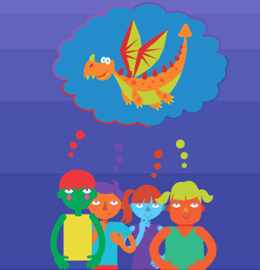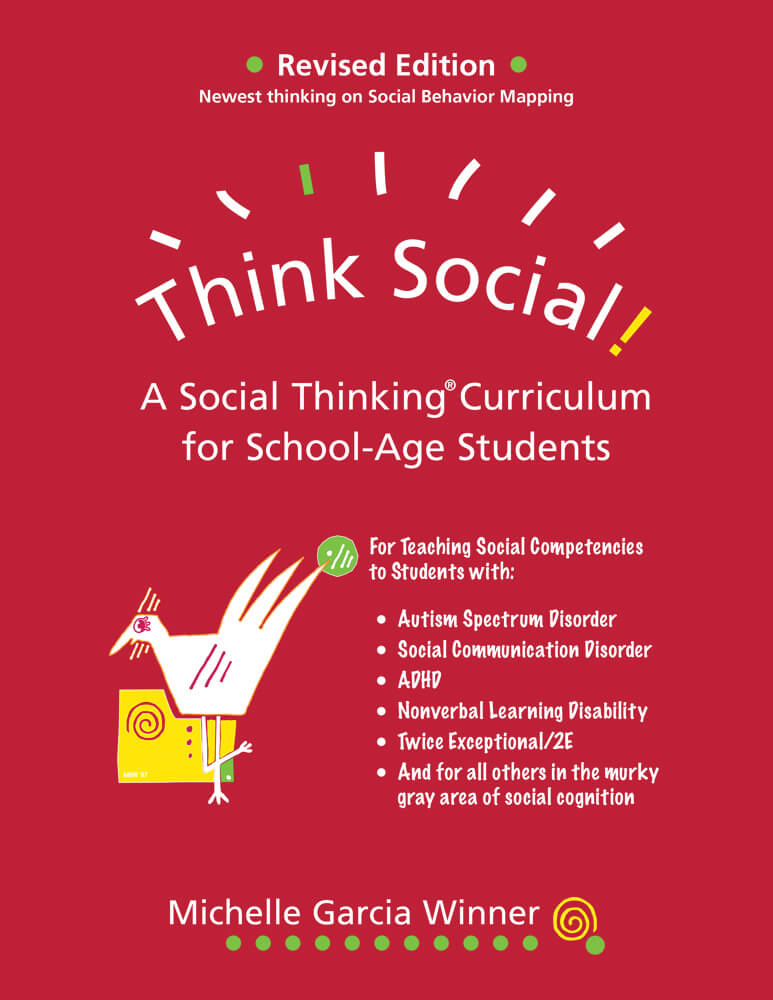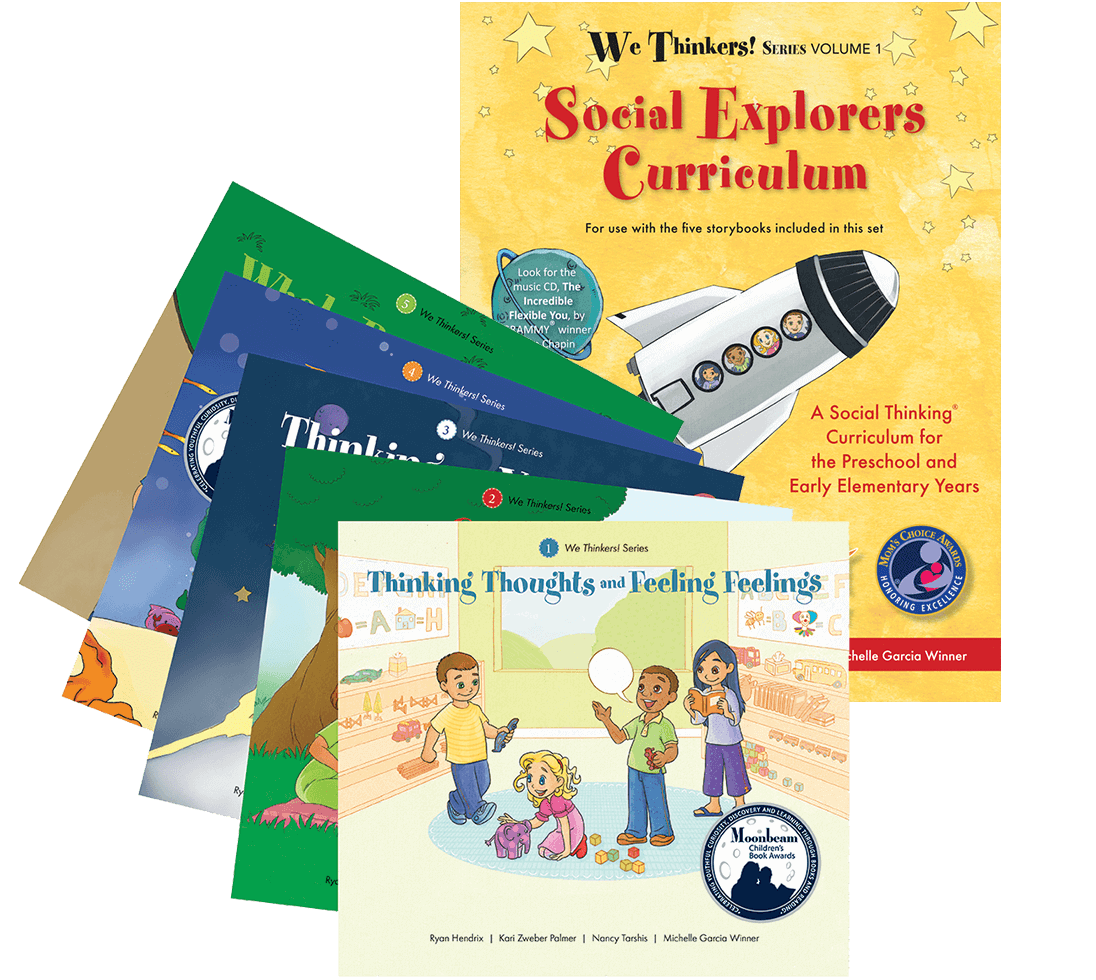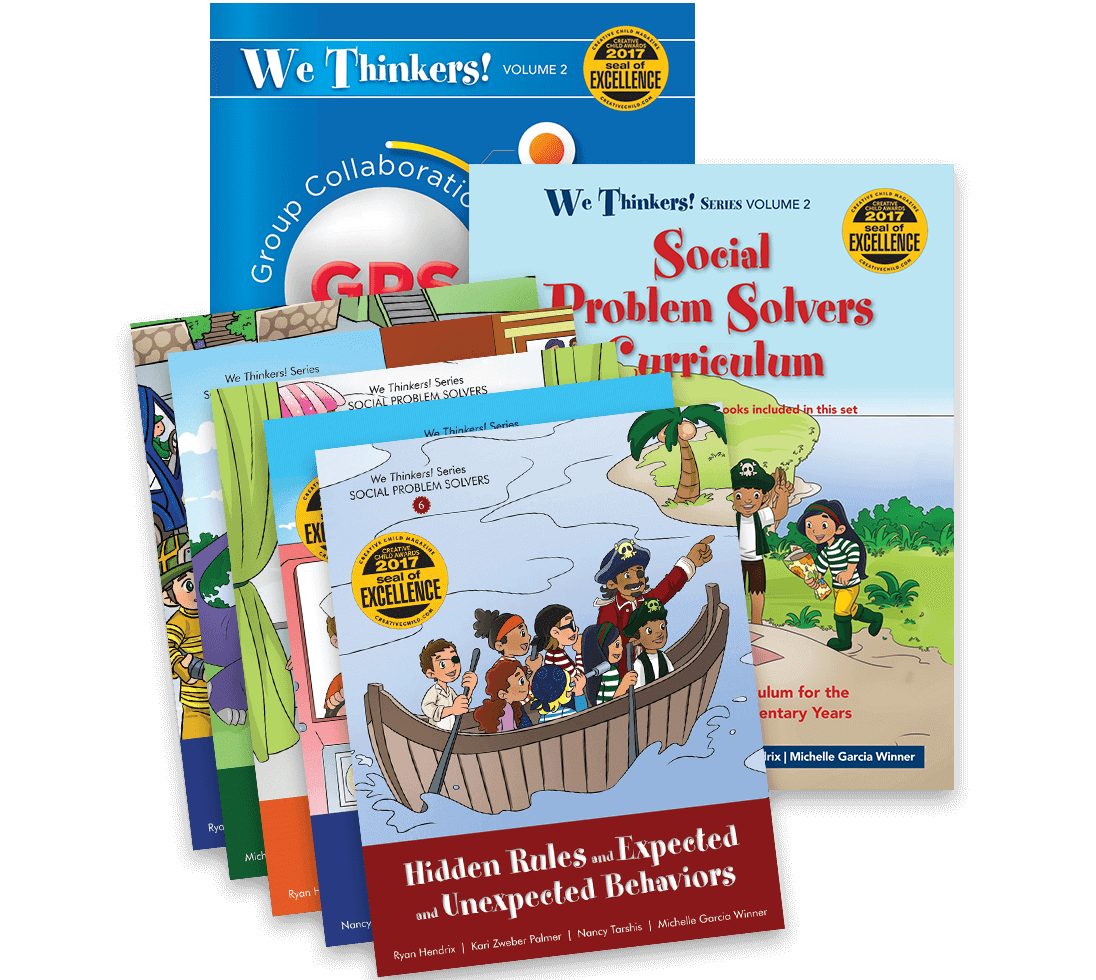© 2022 Think Social Publishing, Inc.
Engaging in conversations requires more than meets the eye! For us to understand and teach shared imagination and why it’s essential to conversational skills and relationship development, we must first define, understand, and observe singular imagination. It’s our ability to create feelings, thoughts, experiences, and imaginary worlds internally. While this may be a kind of personal creative superpower, individuals who solely experience singular imagination may struggle to relate to, imagine, and share others’ thoughts, feelings, and experiences—sharing an imagination—so vital to conversation and social connection.
Todd, the snowman, and the absence of shared imagination
I was asked to observe Todd, a four-year-old child in a preschool classroom. When observing a particular child, it’s always important to observe all children to understand the culture of the classroom and how most of them relate to each other across a series of activities. As you can imagine, four-year-olds are busy folks – some play by themselves for a while, then they play with others. Todd was very much like this as I observed him in the context of his peers. While he mostly played by himself, he appeared socially aware of his peers. He was also thoughtful, careful not to bump into them or take any of their possessions. If I hadn’t known I was there to observe Todd, he wouldn’t have caught my attention as a child who may have social learning differences.
Later in the morning, the teacher asked the children to come to circle time. All the children, including Todd, happily entered the circle of chairs and found a seat. When everyone was settled, the teacher began to read a storybook about a snowman. All the children appeared engaged, hanging on to the teacher’s every word, and delighting in the pictures she showed them. Todd was no exception; he seemed enthralled.
After the teacher finished reading the book, she told the class they were now going to build imaginary snowmen! The teacher led the way out of the circle–and coached the children into helping each other make their large snowballs. The children worked in groups to lift them into place as they brought their snowmen into imaginary real life. All except Todd. Curiously, Todd didn’t enter the group. While Todd appeared to have followed and delighted in the story and the instructions to build a snowman, he didn’t join his peers. He instead took off in his own direction. He walked all the way across the classroom with clear determination to a doll, took the scarf off the doll, and then walked back toward his peers. He didn’t, however, look at his peers or join in their activity. Instead, he stood by himself, wrapped the scarf around his neck, looking quite satisfied with his creative efforts, without any attempt to gain attention from or engage with others. What was he doing? It appeared that Todd had turned himself into a snowman.
Understanding singular imagination vs. shared imagination
Throughout my time observing Todd and his classmates, I not only noticed what they did, but I also tried to figure out why they were doing it (reading their intentions). While it appeared very clear that Todd’s classmates were sharing an imagination as they collectively and collaboratively built imaginary snowmen, it also appeared that Todd was steeped in imagination—but of a different kind. He engaged solely in the use of singular imagination, which made it difficult to play flexibly with his peers or participate in group activities. It was assumed that Todd and his classmates were well practiced in the social cognitive ability to imagine their peers’ ideas and incorporate them into their own thinking or activities.
Neurotypically developing children evolve in their ability to use both singular and shared imagination depending on the situation. Singular imagination is when a person individually imagines their own internal creative ideas. They use their singular imagination when playing by themselves or imagining a fantasy they want to write about, build, or draw. Shared imagination is exclusively used when one person relates to another in the here-and-now, when imagining how other people may interpret one’s written expression (which teachers describe as “writing to an audience”), and imagining what others are thinking and feeling within stories presented on screens or described in text, when depicted in art, etc.
However, not all people develop the intuitive ability to share an imagination. If a child, teen, or adult has a solely singular imagination, they struggle to imagine what others feel, think, or plan. Therefore, others’ actions and reactions are likely confusing to them. Not coincidentally, this cohort tends to be more literal in how they process and respond to the world around them. Because they don’t easily imagine others’ perspective, they may struggle to interpret what others are doing and saying or why someone is not doing or saying something. They also may become frustrated when explaining their ideas or demonstrating an activity, and the listener, who is using their shared imagination, attempts to flexibly take these ideas in a new or different direction. For example, Jorge, an autistic nine-year-old, has a creative singular imagination. A peer, who is engaging his own shared imagination, attempts to play with Jorge in a manner that does not exactly mirror how Jorge is playing. Jorge then stops playing, and with great frustration, announces to this peer, “No! You’re not doing it right!”
Singular imagination and social learning differences
While these two types of imagination impact one’s ability to imagine another’s perspective or flexibly contribute to a group or during play, the concept of having two different types of imagination, singular and shared, is not commonly taught to teachers or counselors at the university level. Most interventionists (parents and professionals) are unfamiliar with these concepts. From our experience, many neurodiverse learners trend toward using singular imaginations. Individuals with singular imaginations may have solid to strong intelligence and language skills, be creative, and imaginative, which results in having unique and important points of view. While they may struggle to consider others’ thoughts, feelings, experiences, and/or differing points of view as efficiently as those with shared imaginations, their unique ideas are important to consider because they often “think outside the box.”
Why shared imagination is essential to academic learning, conversation & relationship development
Most children are born with the capacity to engage in sharing an imagination, which allows them to adapt what they imagine based on input from their group or play partners. It is also the reason so many children intuitively develop to create something imaginary together, like a snowman. Engaging in shared imagination provides the social cognitive toolkit for individuals to imagine the experiences, feelings, desires, and intentions of those they are engaging in play or conversation, or as they interpret people they’re observing in a classroom, on a screen, or in a book. Their shared imaginative abilities extend into academic learning because one’s shared imagination is important for comprehending different points of views in literature, social studies, and history. It’s also essential for written expression. As students are taught to “consider their audience,” they are literally being encouraged to imagine how another person may imagine the ideas they’ve written. In summary, our ability to relate to others in the here-and-now—i.e., work in a group, engage in conversation, and develop relationships seamlessly—relies on the core ability to share in the imagination of those with whom we share space, as well as interact.
Sharing an imagination can be taught and learned through explicit instruction
Sharing an imagination is a core social competency that intuitively evolves as one begins to establish joint attention and then extends into children’s cooperative pretend play. It’s the foundation for nearly all the social experiences we encounter throughout the rest of our lives. It requires social cognitive flexibility and is part of many everyday activities most of us take for granted, such as driving a car, standing in line, working with a team or in a group, and relationship development. Just consider in your life how many times you share ideas, feelings, and experiences—watching the news, listening to podcasts and music, reading about history, talking with friends, family, colleagues, complete strangers–and imagining.
Those born with a stronger singular imagination may also seek to relate to others about their fun and often fascinating ideas. While they enjoy sharing their own experiences, they may struggle to imagine others’ experiences. Using the Social Thinking® Methodology, we begin this explicit instruction for young children through We Thinkers! Volumes 1 and 2. We first teach how the social world works through 10 lessons, one of which teaches about sharing an imagination. For older students, we explore the concept of shared imagination within group work and conversation, in addition to other explicit strategies we teach to help people make sense of how and why we do what we do to create social connection through small talk and conversations.
Resources for teaching shared imagination
We recommend the following resources for evidence-informed curricula, strategies, and tools for teaching shared imagination to help people ages 4+ develop social competencies for conversation and social connection across their lives.
We Thinkers! Vol.1
We Thinkers! Vol. 2
Small Talk & Conversations
Resources for teaching perspective taking for different ages
All Ages
Movie Time Social Learning
Thinking About YOU Thinking About ME, 2nd Edition
Ages 4-10
I Get It!
YouCue Feelings: Using Online Videos for Social Learning
Ages 9-12
Social Thinking Thinksheets for Tweens and Teens
Social Thinking and Me
Teens & Adults
Social Thinking at Work: Strategies for Understanding and Navigating the Workplace
Social Fortune or Social Fate
Socially Curious and Curiously Social













